Here, China plywood manufacturers remind you that when purchasing plywood, it is essential to find the source manufacturer for a more professional, safe, and economical choice.
What is plywood
Plywood is one of the most versatile and widely recognized engineered wood-based panel products used across various construction projects worldwide. It is created by binding resin and wood veneer sheets to form a composite material sold in panels. Typically, plywood features face veneers of higher grade than the core veneers. The primary function of the core layers is to increase the separation between the outer layers where the bending stresses are highest, thereby enhancing resistance to bending forces. This makes plywood an excellent choice for applications requiring both strength and flexibility.
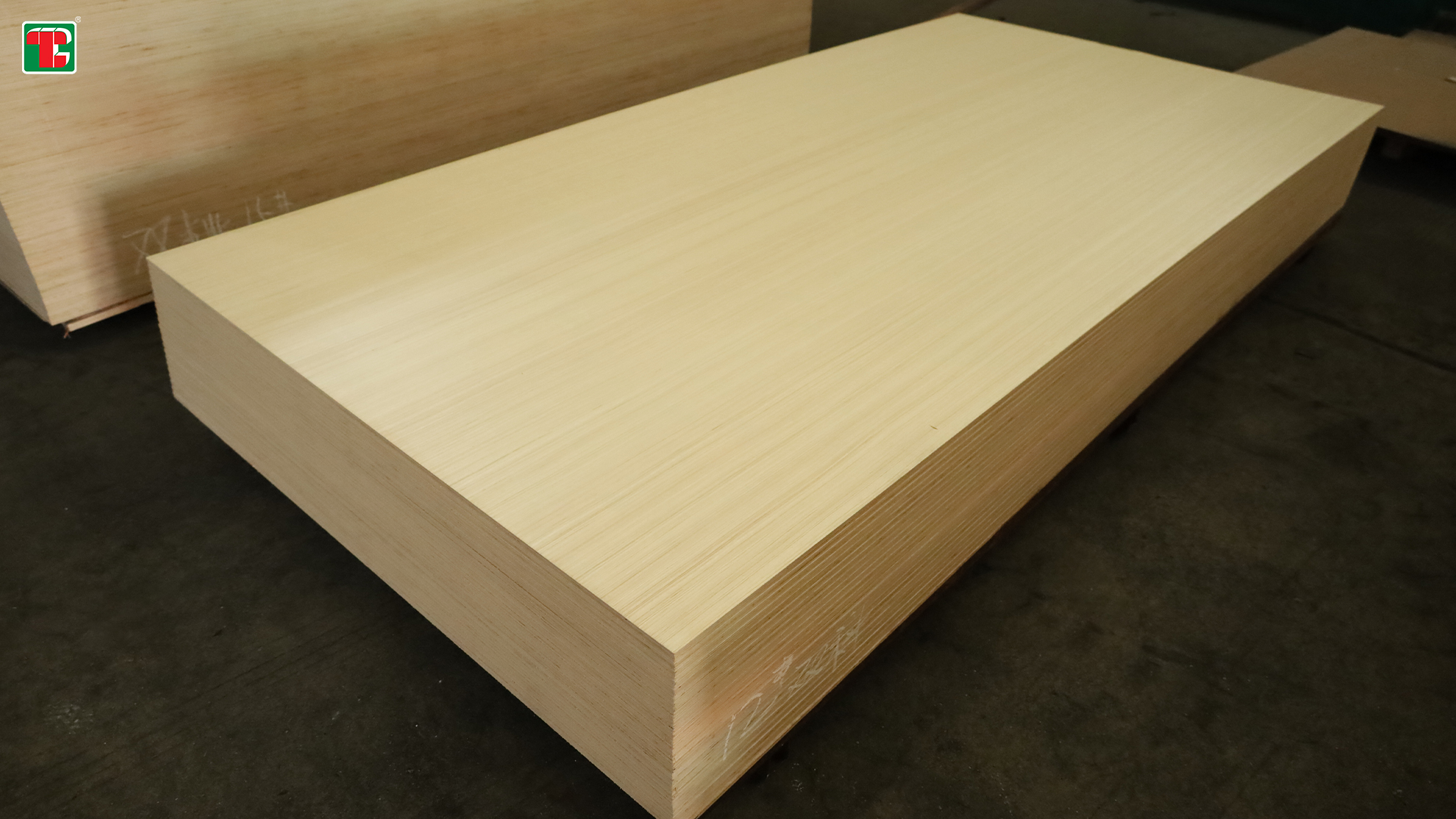
Introduction to production processes
Plywood, commonly known as multi-layer board, veneer board, or core board, is made by cutting veneers from log segments and then gluing and hot pressing them into three or more (odd number of) layers of board. The production process of plywood includes:
Log cutting, peeling, and slicing; Automated drying; Full splicing; Gluing and billet assembly; Cold pressing and repair; Hot pressing and curing; Sawing, scraping, and sanding; Three times pressings, three times repairs, three times sawings, and three times sandings; Filling; Finished product inspection; Packaging and storage; Transportation
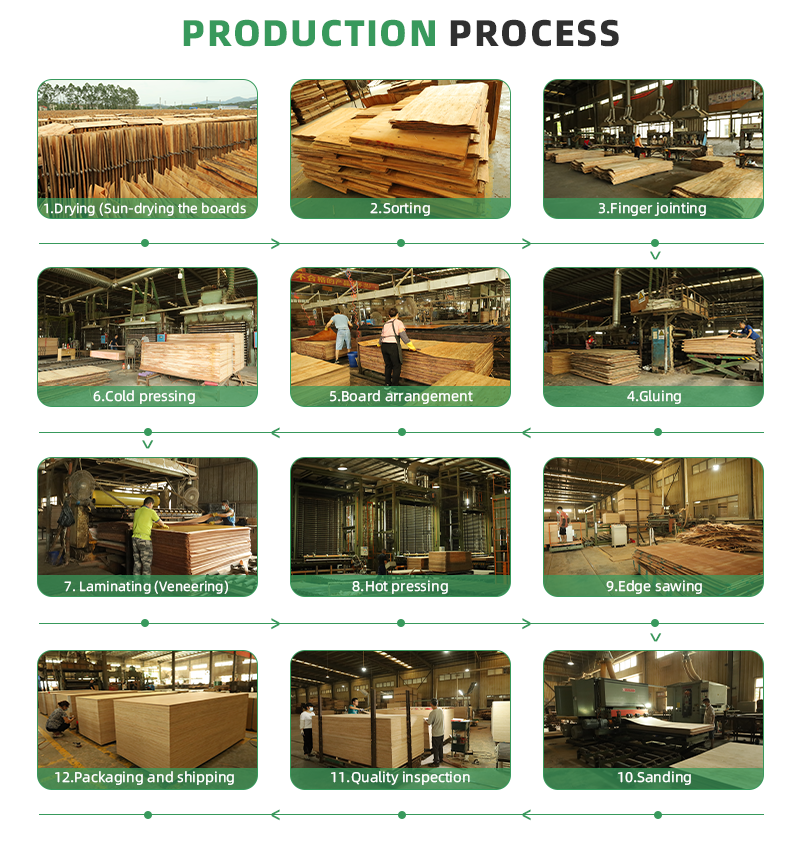
Log Cutting and Peeling
Peeling is the most important link in the plywood production process, and the quality of the peeled veneer will directly affect the quality of the finished plywood. Logs with a diameter of more than 7cm, such as eucalyptus and miscellaneous pine, are cut, peeled, and then sliced into veneers with a thickness of less than 3mm. The peeled veneers have good thickness uniformity, are not prone to glue penetration, and have beautiful radial patterns.
Automated Drying
The drying process is related to the shape of the plywood. The peeled veneers need to be dried in time to ensure that their moisture content reaches the production requirements of the plywood. After the automated drying process, the moisture content of the veneers is controlled below 16%, the board warpage is small, not easy to deform or delaminate, and the processing performance of the veneers is excellent. Compared with the traditional natural drying method, the automatic drying process is not affected by the weather, the drying time is short, the daily drying capacity is strong, the drying efficiency is higher, the speed is faster, and the effect is better.
-Drying-Sun-drying-the-boards.jpg)
Full Splicing, Gluing, and Billet Assembly
The splicing method and the adhesive used determine the stability and environmental friendliness of the plywood board, which is also the most concerned issue for consumers. The latest splicing method in the industry is the full splicing method and toothed splicing structure. The dried and peeled veneers are spliced into a whole large board to ensure the good elasticity and toughness of the veneers. After the gluing process, the veneers are arranged in a crisscross pattern according to the wood grain direction to form a billet.
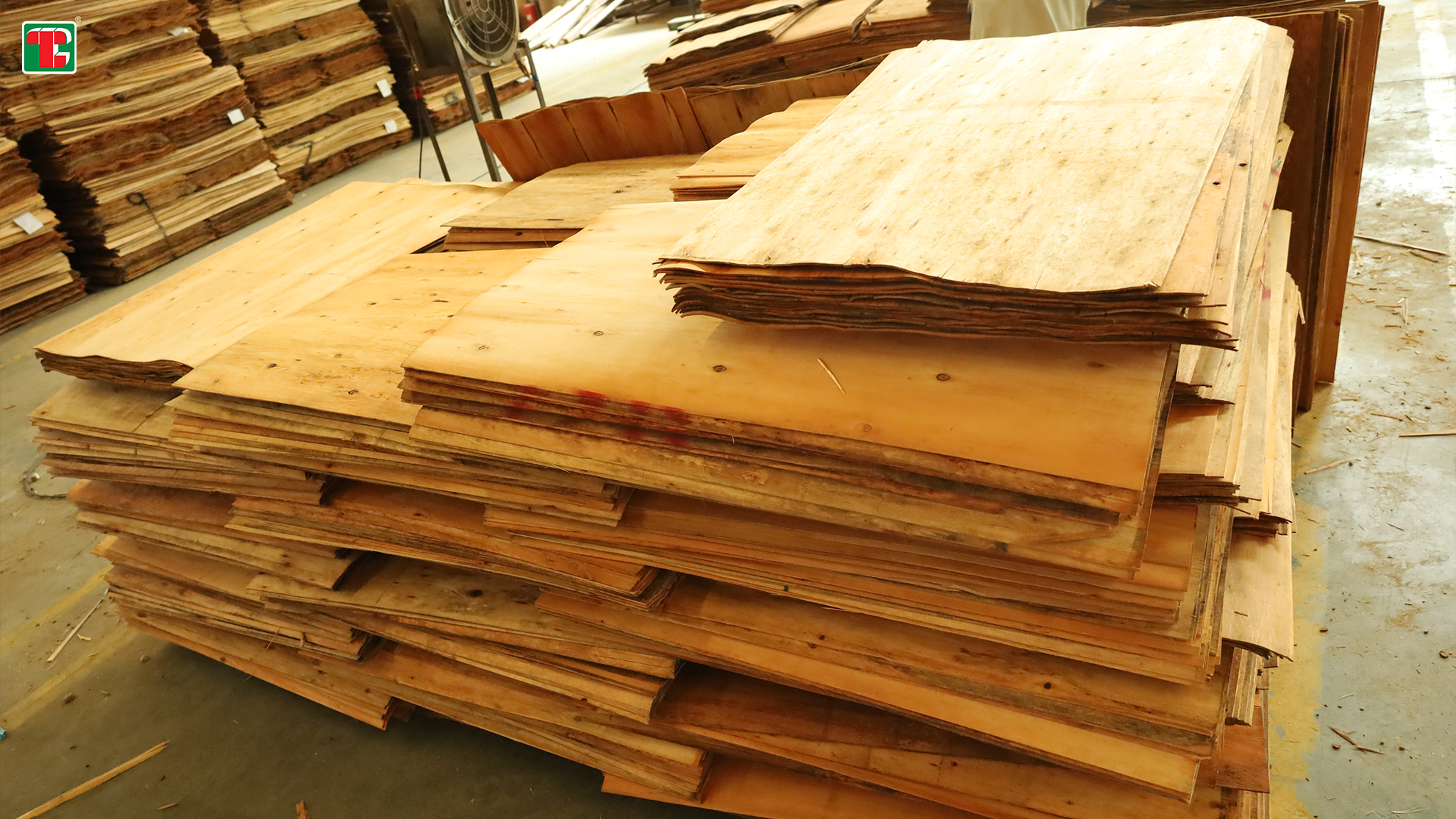
Cold Pressing and Repair
Cold pressing, also known as pre-pressing, is used to make the veneers basically adhere to each other, preventing defects such as veneer displacement and core board stacking during the moving and handling process, while also increasing the fluidity of the glue to facilitate the formation of a good glue film on the surface of the veneers, avoiding the phenomenon of glue deficiency and dry glue. The billet is transported to the pre-pressing machine and after 50 minutes of rapid cold pressing, the core board is made.
Board billet repair is a supplementary process before hot pressing. Workers repair the surface layer of the core board layer by layer to ensure its surface is smooth and beautiful.
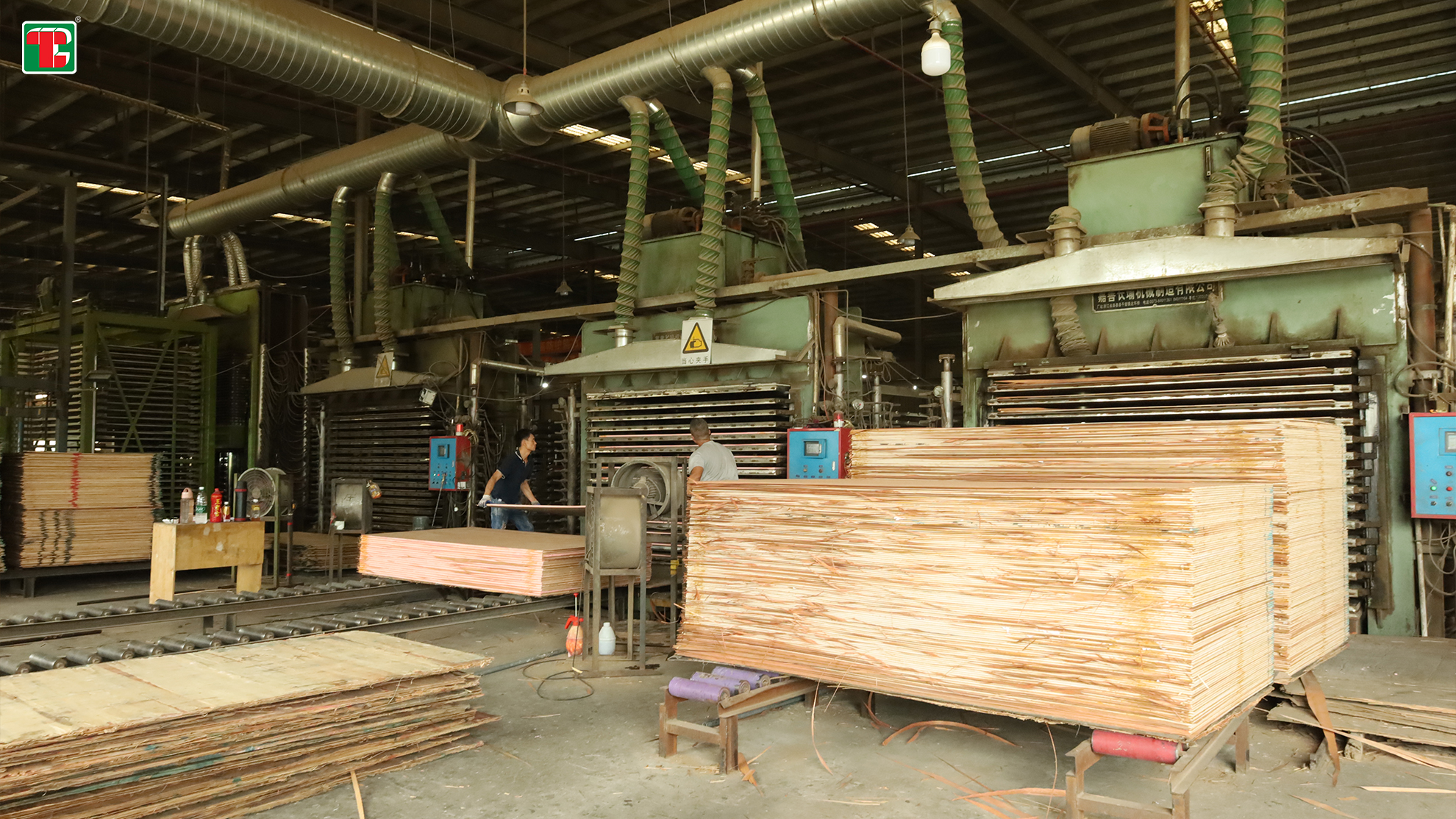
Hot Pressing and Curing
The hot pressing machine is one of the most important equipment in the plywood production process. Hot pressing can effectively avoid the problems of bubble formation and local delamination in the plywood. After hot pressing, the billet needs to be cooled for about 15 minutes to ensure the product structure is stable, the strength is high, and avoid warping deformation. This process is what we call the "curing" period.
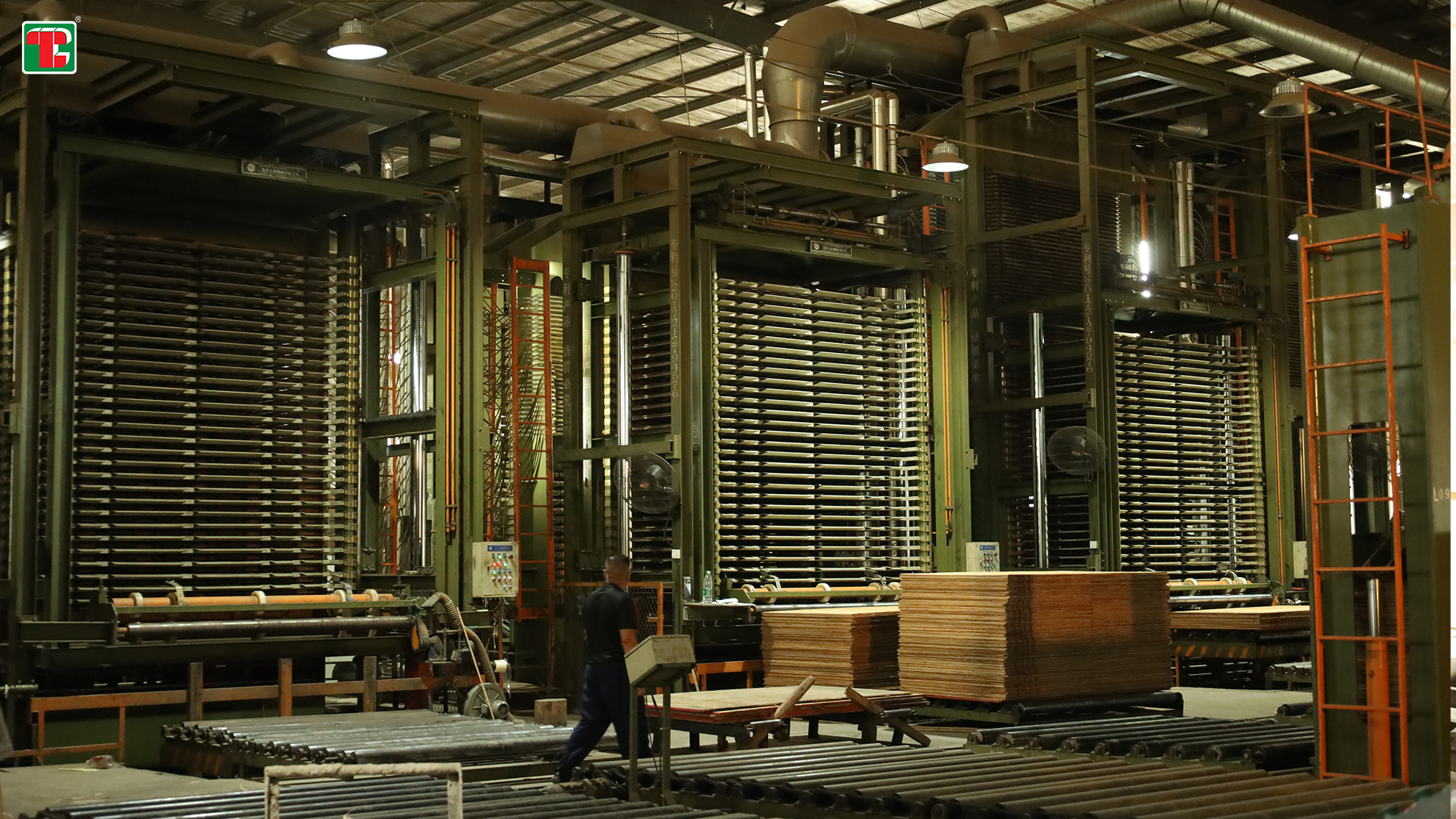
Sawing, Scraping, and Sanding
After the curing period, the billet will be sent to the sawing machine to be cut into the corresponding specifications and sizes, parallel and neat. Then, the board surface is scraped, dried, and sanded to ensure the overall smoothness, clear texture, and good gloss of the board surface. So far, the first round of 14 production processes of the plywood production process has been completed.
Three times pressings, three times repairs, three times sawings, and three times sandings
A high-quality plywood needs to go through multiple fine polishing processes. After the first sanding, the plywood will undergo a second layering, cold pressing, repair, hot pressing, sawing, scraping, drying, sanding, and spot scraping, a total of 9 processes in the second round.
Finally, the billet is pasted with exquisite and beautiful technology wood surface, mahogany surface, and each plywood also goes through a third cold pressing, repair, hot pressing, scraping, sanding, sawing, and other 9 processes. A total of "three pressings, three repairs, three sawings, three sandings" 32 production processes, a board surface that is flat, structurally stable, has a small amount of deformation, and is beautiful and durable is produced
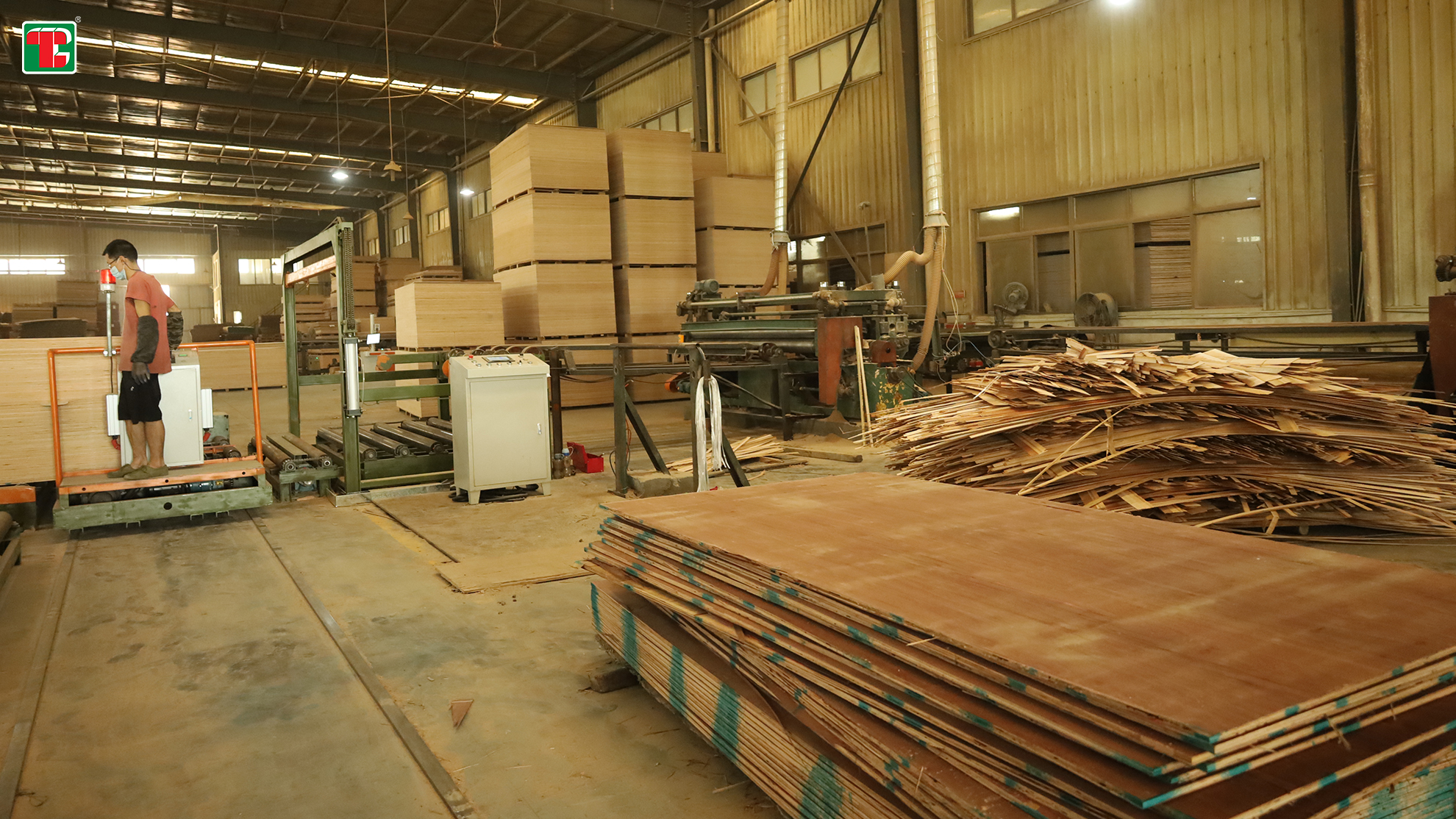
Filling, Finished Product Sorting
The formed plywood is inspected and filled after the final inspection and then sorted. Through scientific testing of thickness, length, width, moisture content, and surface quality, and other standards, to ensure that each plywood produced is of qualified and stable quality, with the best physical and processing performance.
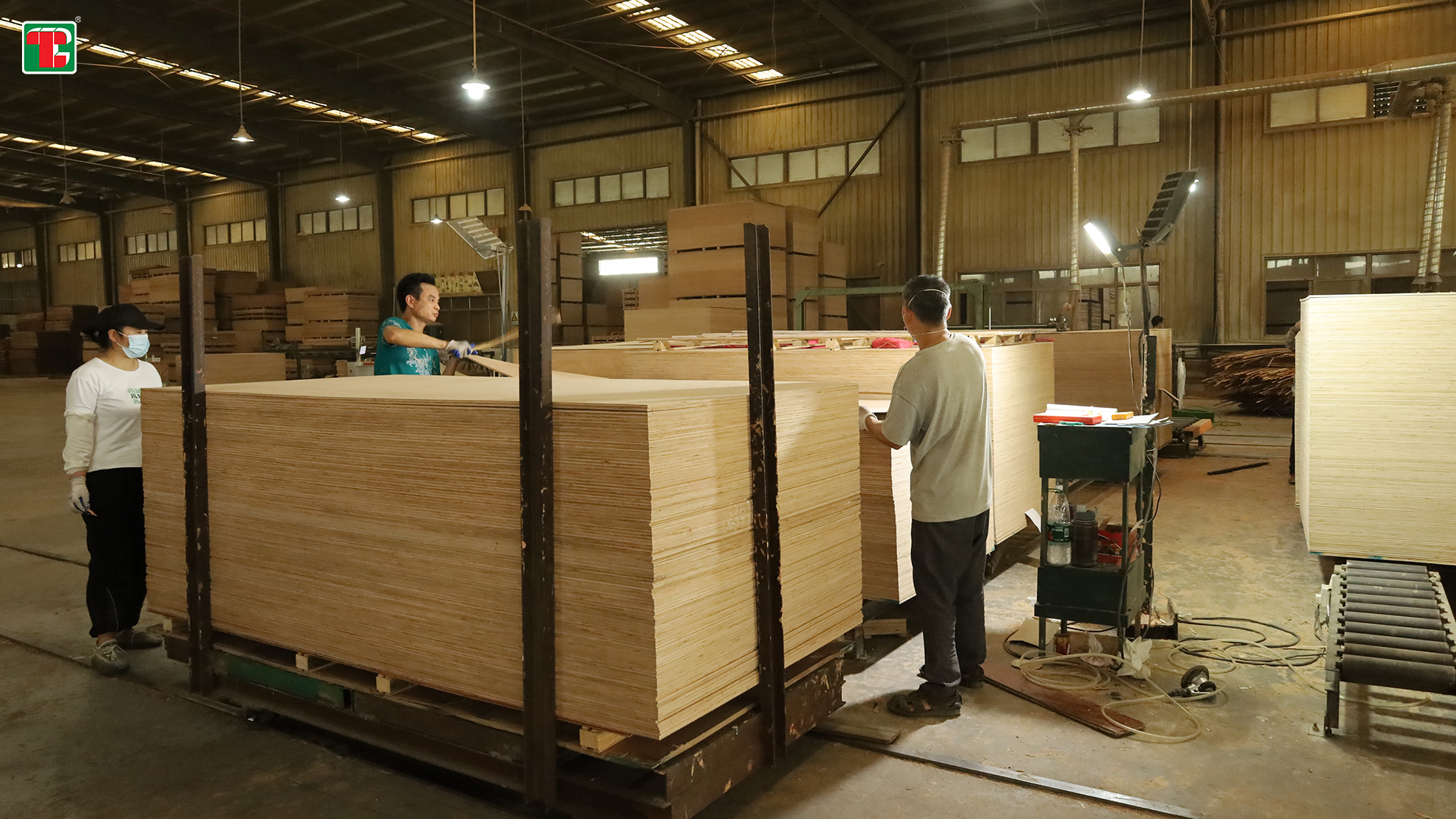
Packaging and Storage
After the finished product is selected, the workers pack the plywood into storage to avoid sun and rain.
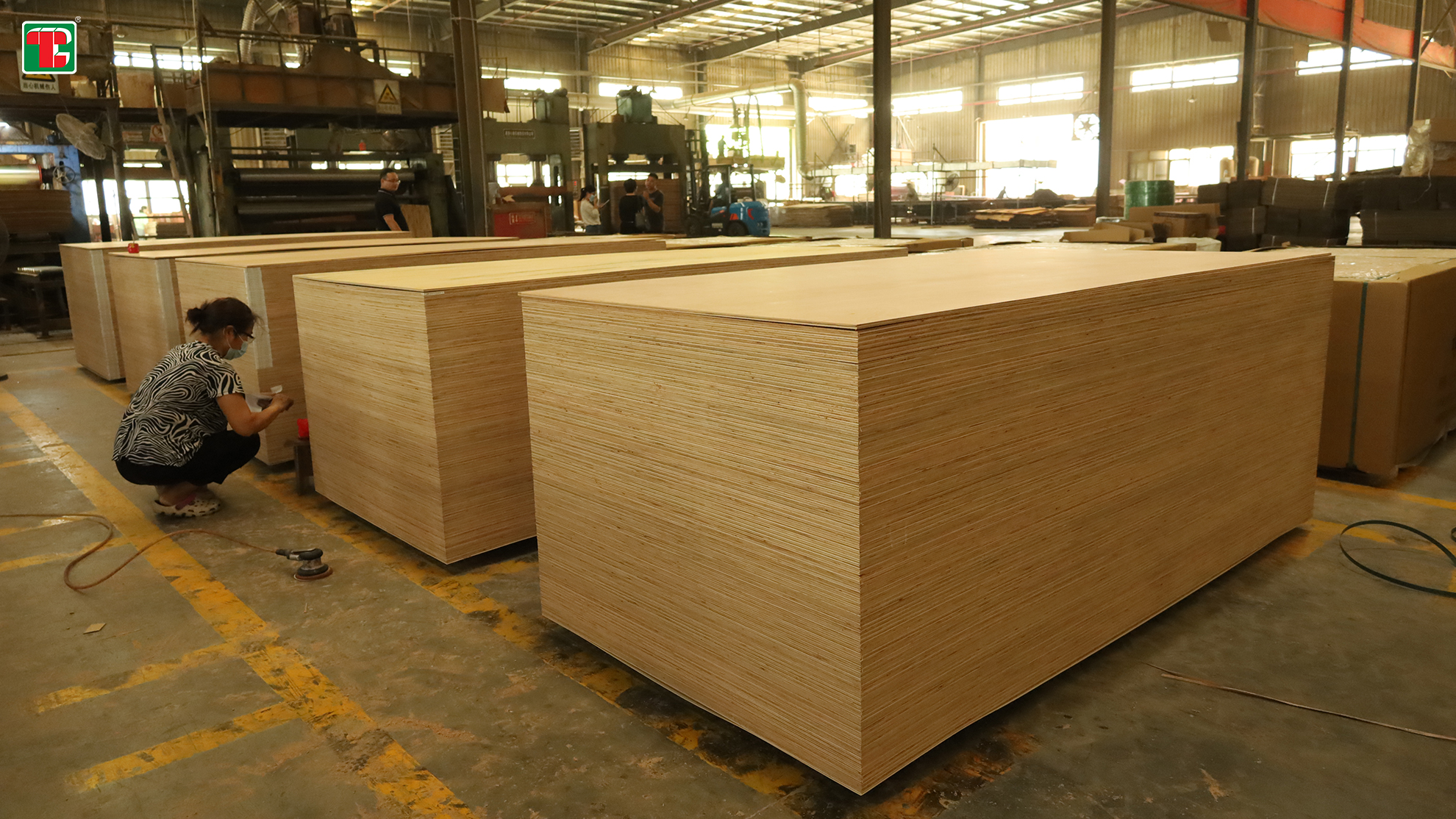
TONGLI TIMBER
What is plywood used for?
Plywood are a common type of board used across various industries. They are categorized into ordinary plywood and special plywood.
The main uses of special plywood are as follows:
1.Grade one is suitable for high-end architectural decorations, mid-to-high-end furniture, and casings for various electrical appliances.
2.Grade two is suitable for furniture, general construction, vehicle, and ship decorations.
3.Grade three is suitable for low-end building renovations and packaging materials. Special grade is suitable for high-end architectural decorations, high-end furniture, and other products with special requirements
Ordinary plywood is classified into Class I, Class II, and Class III based on the visible material defects and processing defects on the plywood after processing.
1.Class I plywood: Weather-resistant plywood, which is durable and can withstand boiling or steam treatment, suitable for outdoor use.
2.Class II plywood: Water-resistant plywood, which can be soaked in cold water or subjected to short-term hot water soaking, but is not suitable for boiling.
3.Class III plywood: Moisture-resistant plywood, capable of withstanding short-term cold water soaking, suitable for indoor use.
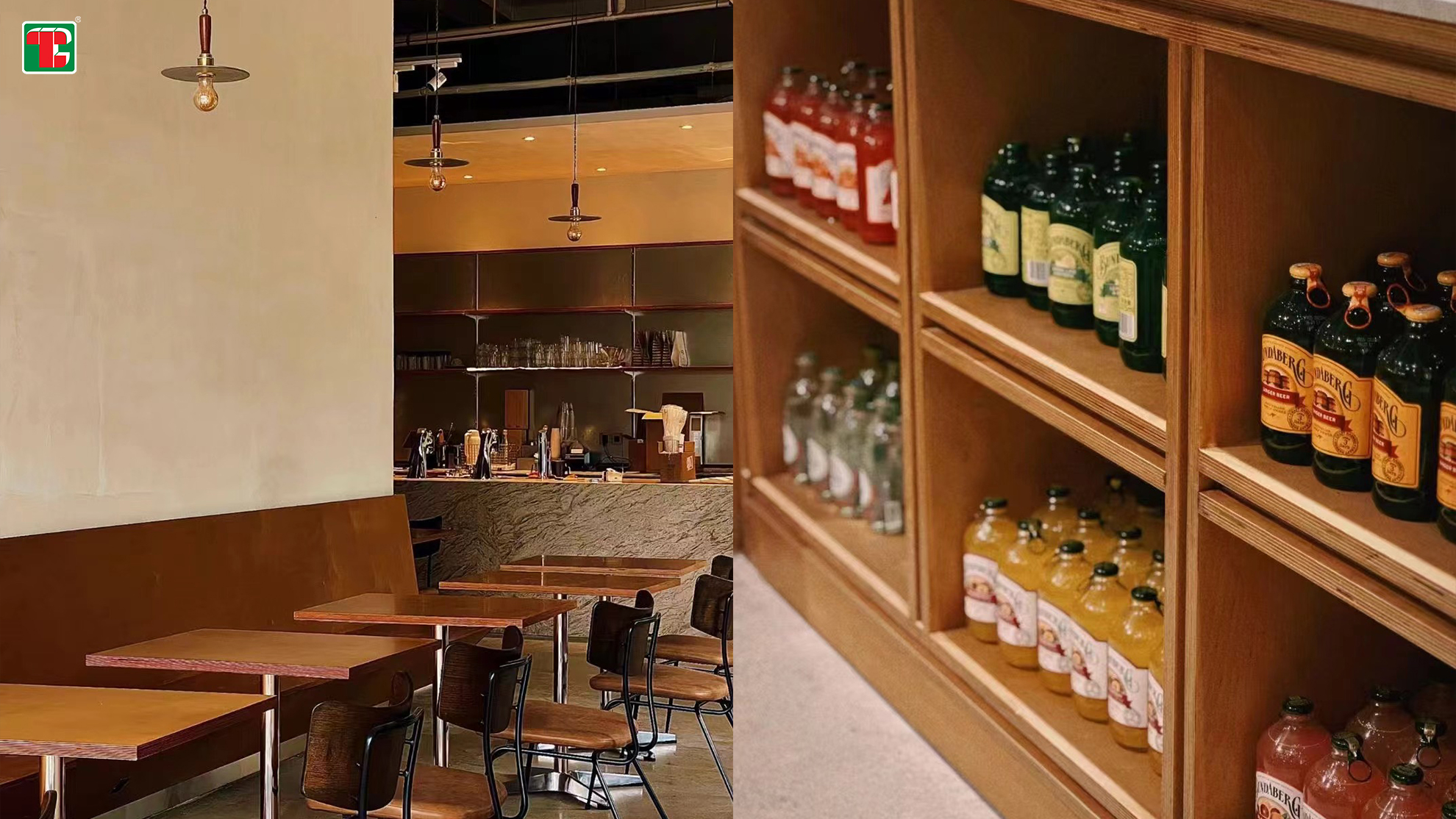
Post time: Jul-08-2024







